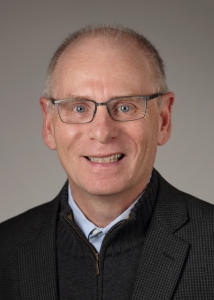American Cancer Society Funds Pioneering Research in Acute Lymphoblastic Leukemia
September is Childhood Cancer Awareness Month, an observance recognized by health care institutions, advocacy organizations, patients and families around the world. While childhood cancer is rare, it is the leading cause of disease-related death past infancy in children and adolescents, according to the National Cancer Institute.
Acute Lymphoblastic Leukemia (ALL) is the most common cancer diagnosed in children, representing about 25% of cancer diagnoses among children younger than 15. Thanks to decades of scientific discoveries, dramatic improvements in survival have been achieved in children and adolescents with cancer. Today, ALL can be considered a cancer “success story,” with a survival rate that has improved from about 10% in the 1960s to about 90% today.
As the largest non-profit funder of cancer research in the United States outside the federal government, the American Cancer Society (ACS) has helped to drive many research programs into new and better treatments for ALL. Real World Health Care reached out to the ACS’s William L. Dahut, MD, Chief Scientific Officer, to learn how the organization supports children with ALL and delve into some of the pioneering research studies and clinical trials it has funded.
Three Pillars of Support
Real World Health Care: How does the American Cancer Society support children with acute lymphoblastic leukemia (ALL) through its programs, services and research?
William Dahut: The American Cancer Society supports children with ALL through our Patient Support Pillar, Discovery Pillar and the ACS Cancer Advocacy Network (ACS-CAN). The patient support pillar provides cancer information, transportation and lodging to cancer patients as well as multiple other means of support. The discovery pillar is the research arm and in the past 10 years, the American Cancer Society has funded 28 research grants focused on acute lymphoblastic leukemia in the amount of $14.5 million, including 5 grants totaling $3.8 million that are currently in effect. (The Society’s research investment in leukemia in the past 10 years is approximately 221 grants totaling $61.2 million, including 48 current grants in the amount of $20 million.). ACS-CAN is our policy and advocacy arm and works with federal and state legislatures to help ensure access to cancer therapies.
Improvements in CAR-T Therapy
RWHC: How has ACS-funded research changed the treatment landscape for ALL patients?
WD: The American Cancer Society helped fund some pioneering research and clinical trials that helped develop and improve the treatment known as chimeric antigen receptor (CAR) T-cell, which has led to dramatic remissions and cures in patients with ALL. ACS began funding research in 2010 to help scientists conduct the pioneering research and clinical trials that have helped develop and improve successful CAR T-cell therapies for children and adults who have leukemia or lymphoma. Studies today are looking for new CAR-T targets, combining multiple targets into one CAR-T and using CAR-T therapy as a bridge to bone marrow transplants.
Additional T-cell-related research funded by ACS includes a study which showed that whether T-cell ALL leukemia takes off or worsens depends on structural changes in the layout of protein bundles called chromosomes, as well as a study that investigated use of a light-operated nanoparticle to remotely and selectively activate T-cells to attack tumor cells such as those found in some leukemia and lymphoma cancers.
Reducing ALL Treatment Side Effects
RWHC: Some children with ALL relapse after treatment. Is ACS funding any studies or clinical trials to help prevent this?
WD: The ACS provided funding that helped support the research of Barton Kamen, MD, PhD, in support of his work that provided important insights for reducing treatment side effects in children with ALL. Dr. Kamen investigated different ways to help reduce chemotherapy side effects in children. One approach was metronomic therapy: low doses of chemotherapy given frequently or continuously. Although the approach was already in use, Dr. Kamen’s research suggested that it could be effective in children while reducing some toxic side effects from higher doses. His research contributed to the understanding of this practice, which some use but is not considered a standard approach.
More recently, ACS funded a Dana-Farber Cancer Center researcher, Kira Bona, MD, MPH, to study “Poverty and Treatment-Associated Neurocognitive Decline in Childhood ALL.” It is important to note that nearly one in three childhood ALL survivors will suffer from changes in attention, memory and learning (neurocognitive function) due to chemotherapy. Dr. Bona’s study uses the research infrastructure of a Children’s Oncology Group (COG) multi-center clinical trial for ALL to ask whether living in poverty at the time of diagnosis is associated with neurocognitive changes during therapy and markers of biologic stress at diagnosis and during therapy. At the individual level, this study will identify patients at highest risk of neurocognitive late effects (based on biomarkers) who will most benefit from future trials testing medications to prevent neurocognitive deficits. At the population level, results will inform care delivery interventions, such as risk-based neurocognitive screening and poverty-targeted interventions, to reduce survivorship disparities.
Participating in Clinical Trials
RWHC: What advice would you give to a parent of a child with ALL about seeking out or participating in a clinical trial?
WD: All of the advances in childhood leukemia have come in clinical trials. Studies have shown that regardless of tumor type, care for cancer patients is best for those on clinical trials, many of which can be offered locally. Families should discuss clinical trial options with their physicians, reach out to local cancer centers or contact ACS at 1-800-227-2345 or on our web page www.cancer.org.

















